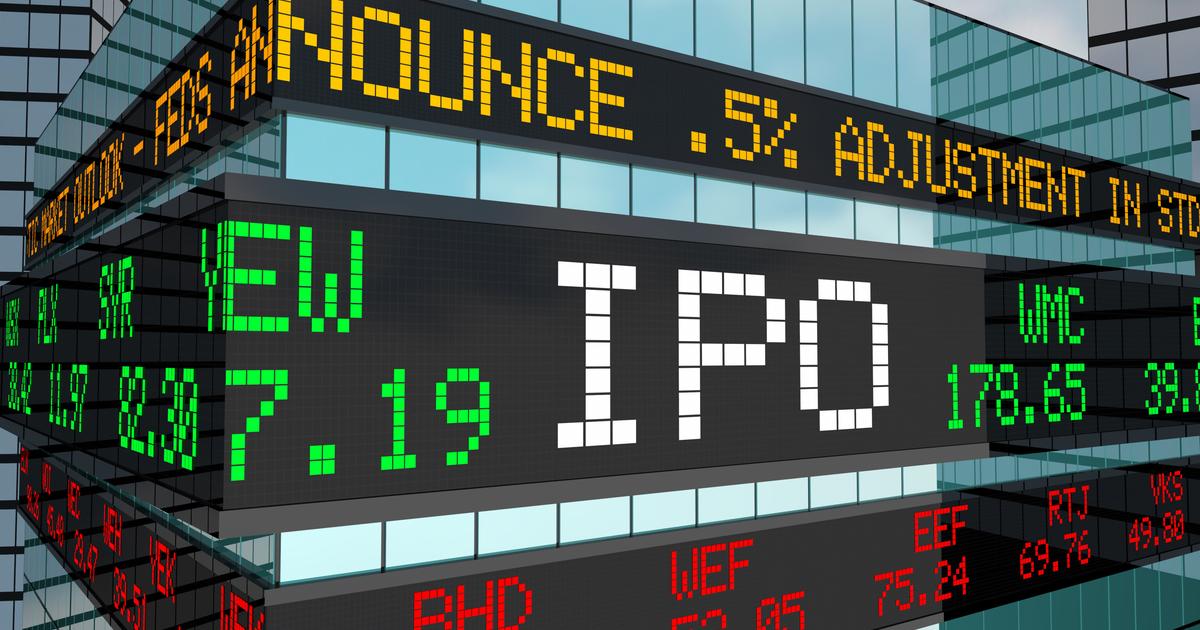Listed Spanish companies have until next September to submit their accounts for the first half of the year.
However, and as is customary, the vast majority of financial departments of corporations have advanced the publication of half-yearly figures to the last week of July.
With the data already registered in the National Securities Market Commission (CNMV), it can be concluded that the profit harvest between January and June 2022 has been, in general terms, good taking into account the very atypical circumstances that have conditioned this period.
Specifically, during the first half of the year the groups listed on the Stock Exchange have recorded a net result of 31,685 million euros.
This is a volume of profits 3.77% lower than that registered in the same period of 2021. However, a year ago Telefónica and CaixaBank recorded voluminous capital gains that triggered their profits.
Without taking into account the figures of the operator and the financial institution due to their distorting nature, the profits of the Spanish listed companies rose by 44.5%.
Not bad at all if you take into consideration that they are compared to a year (2021) where profits broke their historical record.
In addition, we must bear in mind that in recent months a black swan has appeared that nobody counted on: a war in the heart of Europe.
The Russian invasion of Ukraine has upended all the roadmaps to give rise to a kind of zero-sum game in which some win at the expense of others.
The warlike climate has triggered the price of hydrocarbons —fattening the accounts of the energy companies, but triggering the expenses of the rest of the sectors—.
Faced with this hyperinflationary environment, central banks have responded by raising interest rates much more aggressively than expected - giving air to the ailing margins of banks, but raising the financing costs of many companies and retracting consumer demand. .
In spite of this convoluted economic environment, the high part of the corporate accounts also attests that the Spanish companies have saved the semester with good marks.
Sales is the bloodstream for any corporation.
Without them, companies can only survive by reducing costs, but that is a strategy whose days are numbered.
Between January and last September, the companies with a presence on the Stock Exchange had a joint turnover of 318,908 million euros, which represents an increase of 29.46% compared to the same period of the previous year.
For many years, the business abroad of listed companies was the main driver of their income statement.
However, during the first half of 2022, domestic activity has been the one that has grown the most.
Specifically, the sales obtained in Spain by the companies included in the Ibex 35 improved by 52% to 79,053 million.
In the case of foreign billing, it totaled 132,938 million, with an increase of 31.19%.
Thanks to this, domestic activity recovered some ground, accounting for 37.28% of total Ibex sales, compared to 33.8% a year ago.
Regarding the evolution of the accounts at the operating level, a certain loss of traction is beginning to be seen due to the increase in production costs (raw materials, energy, salaries) and financial costs (the rise in interest rates makes the service of the debt).
The gross operating result or EBITDA is the gold standard of a company's progress because it roughly reflects revenues minus costs (without taking into account items such as extraordinary items, depreciation or taxes).
The total EBITDA of listed companies in the first half of the year totaled 47,790 million euros, 11.28% higher than in the same period of 2021.
Small and medium-sized listed companies are the most exposed to the domestic market.
This characteristic, together with the lesser impact of extraordinary items on their income statements, has meant that this group of companies has performed somewhat better in aggregate terms than the large groups on the floor during the semester.
The benefits of the Ibex —without counting Inditex, Naturgy, Siemens Gamesa and Solaria, which have not yet published their half-year figures— totaled 27,931 million between January and June, which represents a decrease of 5.36%.
On the other hand, the joint profits of the rest of the companies in the continuous market totaled 3,754 million, with an improvement of 9.95%.
From a sector point of view, the main protagonists of the results campaign have been energy stocks.
Repsol, for example, earned more in the first half of this year (2,539 million) than in the entire 2021 financial year, driven by the rise in oil.
Slightly more than half of the net profits until June (56%; 1,678 million) originated in the international business of the oil company, especially in the area of exploration and production, the most benefited by high prices.
“The world is facing a very complex and volatile environment triggered by the disruptions generated by the Russian invasion of Ukraine.
We have appreciated a growing concern about the security of supply that has caused a situation of high prices for raw materials”, recognized the CEO of the oil company,
Josu Jon Imaz, in the presentation of results.
"Under this environment, the efficient operation of our assets, the reliable and affordable delivery of energy to our customers, together with the guarantee of security of supply, are our main priorities," he added.
Reminder
For its part, the largest Spanish electricity group, Iberdrola, posted a record profit of 2,075 million euros between January and June.
It is the best half-year result since there are records and 36% higher than in the same period last year.
The figures are based, above all, on the good performance of its business in the United States, Brazil and the United Kingdom.
On the opposite side is the adverse result of its subsidiary in Spain, which reduced its profits by 26%.
“We continue to increase our investments to reinforce energy autonomy and accelerate the green transition, reducing dependence on fossil fuels.
The projects that we have underway in Spain and around the world are allowing us to generate economic activity and support 400,000 jobs in more than 19,000 suppliers", slipped the president of Iberdrola,
Along with energy, the other sector that is going to be subject to a new tax within the Government's strategy of generating resources with which to mitigate the impact of inflation on families with lower incomes is banking.
Specifically, a rate of 4.8% will be applied to their interest margin and the commissions they charge to their clients.
The five big banks (Santander, BBVA, CaixaBank, Sabadell and Bankinter) earned 10,132 million euros in the first half.
This figure represents a fall of 8.9% compared to the previous year, which is mainly explained by the extraordinary items that CaixaBank achieved at the time after the merger with Bankia.
The entity that earned the most money during the semester was Banco Santander: 4,894 million, 33% more.
“Banks continue to be part of the solution and, as before,
A key sector for the Spanish economy is tourism.
With the arrival of the pandemic, the leisure business stopped and it is now that it is beginning to show clear signs of recovery.
These can be seen, for example, in the results of the two large listed hotel chains.
Meliá returned to profits (2.98 million) and NH Hotels, although still in the red (-15.34 million), managed to reduce its losses by 89%.
“If the first half of last year could be summed up in the word resilience, in 2022 the performance revolves around the word recovery, which, with unexpected speed, has forced us to revise our business projections upwards on several occasions,
Along with tourism, another of the sectors with great weight in the Spanish GDP is the automotive industry.
Spain is very powerful in everything related to the auxiliary automobile industry.
This activity, after overcoming the strong impact of the pandemic and supply problems, is beginning to show signs of improvement.
Gestamp, for example, earned 117 million, 41% more, while Cie Automotive's profit improved by 8%, to 160 million.
"We are facing a difficult second semester, characterized by similar uncertainty, in addition to possible gas supply restrictions in Europe and a scenario of higher inflation," warned the president of Gestamp, Francisco J. Riberas.
The glass half full
In this season of business results, it was as or more important than knowing the figures achieved in the first half of the year to test the sentiment of the companies facing a second part of the year that is expected to be complicated.
The US, the largest economy on the planet, is already in a technical recession (two consecutive quarters of falling GDP), and in the rest of the economies, growth forecasts have been cut significantly.
All this in a context where double-digit inflation still does not seem to have peaked and where central banks are still keeping additional rises in interest rates in the chamber.
As if that were not enough uncertainties, we must add the Russian enigma: all eyes are on Vladimir Putin and his decision on whether he will completely cut off gas supplies to Europe.
With these ingredients, the most normal thing would have been to see the managers of the listed companies on the defensive in the presentations of results, hiding behind the low visibility of the environment so as not to make future projections.
However, despite the fact that the obstacles accumulate in the short and medium term, there have hardly been any profit warnings —warnings of lower-than-expected results.
Rather, interventions in the opposite direction have predominated, either confirming the objectives set for the year as a whole, or improving them.
“We are proud to present half-year results that are above or in the upper range of our targets despite the complex macroeconomic context.
We feel very comfortable with the current year and have updated the objectives to the high range of target revenue growth and to the medium-high range of OIBDA [the equivalent of the operating profit of telecommunications companies]”, highlighted the Chairman of Telefónica , José María Álvarez-Pallete, during the presentation of the six-monthly figures.
Companies such as Cellnex and Banco Santander also confirmed their objectives.
For its part, Indra took the opportunity to improve its annual objectives in terms of revenue, EBITDA and cash generation.
50% off
Subscribe to continue reading
read without limits
Keep reading
I'm already a subscriber

/cloudfront-eu-central-1.images.arcpublishing.com/prisa/Q32QG7IG6ZEPHI5MBOPEAVWYXI.JPG)







